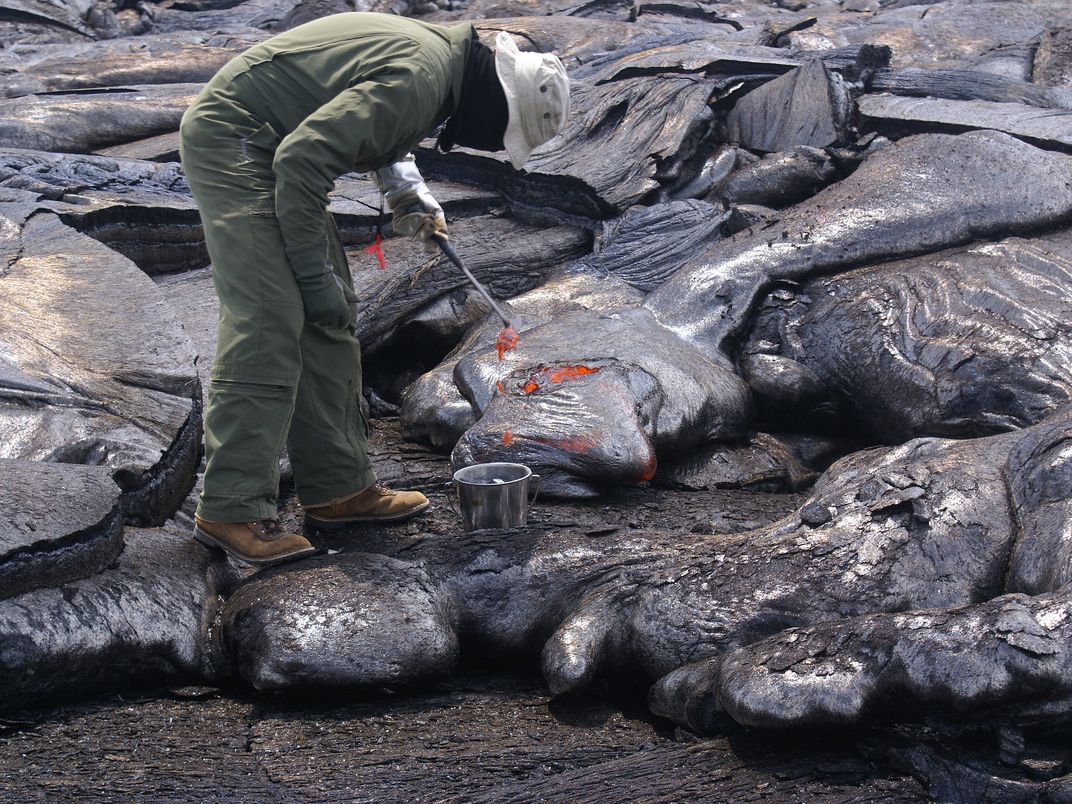Martian Mud Probably Looks Like Lava
Muddy water that drains smoothly on Earth leaves a lumpy trail under Mars-like conditions
/https://tf-cmsv2-smithsonianmag-media.s3.amazonaws.com/filer/04/0d/040d5961-ac26-4432-b981-e11e9c1dc84b/2020_may20_marsmud.jpg)
Mars’ Chryse Planitia region is peppered with small hills topped with craters. The formations look like volcanoes, but a new study published in Nature Geoscience on Monday suggests that they don’t spew lava, but mud.
The question of whether the area was formed by molten rock or water-rich mud puzzled geophysicist Petr Brož, but he and his colleagues weren’t sure how to conduct tests to give evidence one way or the other. No Mars rovers have approached the area yet. Then, Brož met Manish Patel, a planetary scientist at the Open University, he tells CNN’s Ashley Strickland via email. The Open University houses the Mars Chamber, a six-foot-long tube that can replicate Mars-like conditions (all but gravity) on Earth.
For a month, the research team spent an average of ten hours a day in the lab coming up with situations to test how mud flows in the chamber, per CNN. They found that with Earthlike conditions, the mud flows across the sandy test surface “like gravy poured onto a dinner plate,” according to BBC’s Jonathan Amos. But under Mars’ low atmospheric pressure and frigid temperatures, the mud moves haltingly, and doesn’t freeze all at once.
“Before our experiments, we believed that the entire flow would freeze in seconds and it would stop moving,” Brož says to Leah Crane at New Scientist. “But once you build a crust, the mud is not exposed to the atmosphere anymore and the mud can remain liquid and move under the protection of the crust.”
According to the study, the most important factor to the mud’s lumpy flow is the low air pressure on Mars, which is about one percent of the air pressure on Earth. For comparison of how thin and cold the atmosphere is on Mars, the air pressure on the top of Mount Everest is about one-third of that at Earth’s sea level. Under such low pressure, the water in the Martian mud evaporates the moment it hits the air, leaving behind a crust of solid dirt. Bit by bit, the liquid inside breaks through thin points in the crust, only to have its outside freeze again. The result resembles pahoehoe lava flows on Earth.

But instead of an underground reservoir of magma waiting to pour over the planet’s surface, the sludge would come out of a mud volcano from an underground pool of water.
“There has to be, or had to be, some sort of aquifer containing liquid water to mobilize the fine-grained sediments and take them to the surface of Mars,” Brož tells CNN. "Mud flows can look quite similar as magmatic lava flows on Mars, so in principle we are complicating the future exploration of Mars via satellite images.”
Scientists have seen evidence for years that there’s water, in liquid and ice form, on Mars. Recent research suggests it’s too cold and salty to support life, but the idea that it might spew from volcanoes isn’t unheard of. There are mud volcanoes on Earth, too, usually near hot springs and oil fields.
In experiments not included in the Nature Geoscience paper, the research team simulated a hot day on Mars, which can reach up to about 68 degrees Fahrenheit but still at a very low air pressure. Under those conditions, the mud “was jumping over the surface as if levitating," Brož tells the BBC.
“Next time we see something that looks like a lava flow, we cannot be sure that it is lava – it could be mud,” says Brož to New Scientist. “You probably need ground truth, to send a rover or an astronaut with a hammer to take a sample and be sure.”